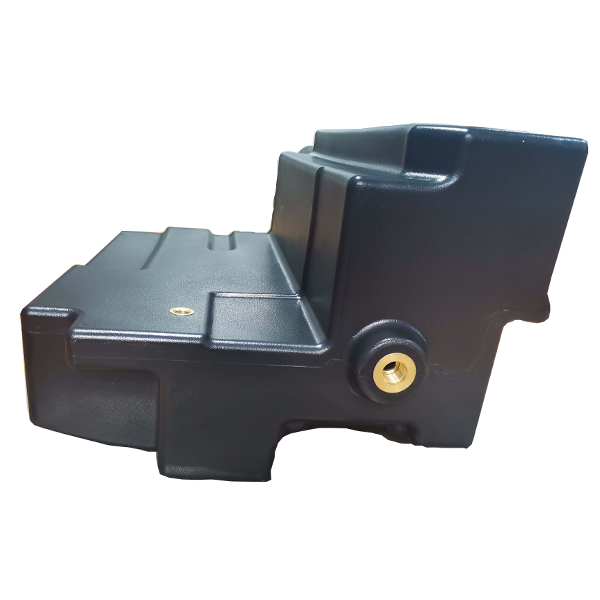By cyroto | 30 October 2023 | 0 Comments
Advancements in Rotomolding Technology for Fuel Tank Production
For many years, the automotive industry has been struggling to come up with a more efficient and cost-effective way of producing fuel tanks that meet the ever-growing demand for reduced permeation and improved safety. In recent times, rotomolding has emerged as a substantially better alternative to traditional steel and multilayer blow-molded fuel tanks. This blog post takes a deep dive into the advancements in rotomolding technology and how it is revolutionizing fuel tank production.
1. Emission Reduction: The Journey Towards Low Permeation Rotomolded Fuel Tanks
One of the most significant advantages of rotomolding fuel tanks is the low permeation rate. Earlier, the impermeable inner layers of steel or multilayer blow molded fuel tanks were used to contain emissions. Rotomolded tanks, on the other hand, have an internal layer that is specifically designed to reduce permeation and decrease the amount of hydrocarbon gases that escape into the atmosphere. These high-density polyethylene (HDPE) resin-based tanks have been shown to reduce hydrocarbon emissions by up to 50% compared to traditional fuel tanks. It is essential to note that regulations in many regions now put a cap on fuel emissions. Therefore, more manufacturers are pivoting to rotomolding fuel tanks.


2. Cost-Efficiency Analysis: Rotomolded Vs. Steel and Multilayer Blowmolded Fuel Tanks
When compared to steel and multilayer blow-molded fuel tanks, rotomolded tanks are much more cost-effective. Rotomolding is a one-step process that produces the entire tank in one singular step, eliminating the need for in-house welding, and additional manufacturing processes are needed. The costs associated with transferring completed or partially completed tanks to other service providers are also drastically reduced. In addition, rotomolded tanks are designed to be lighter than their steel counterparts, which translates to reduced shipping costs, fuel consumption, and freight charges.
3. Design Flexibility: Exploring the Versatility of Rotomolding in Fuel Tank Manufacturing
Designers and engineers are always seeking better ways to improve fuel tank production, including aspects such as geometrics, shape, and overall aesthetics. Rotomolding fuel tanks take the lead in the flexibility of design options, versatility in materials selections, their capability to create complex designs, and the integration of multiple functional systems into the same tank. All these aspects help to improve functionality, compatibility, and durability in highly competitive and restrictive markets.
4. Collaboration Efforts: How Companies are Partnering to Develop Multilayer Rotomolded Tanks
As the demand for rotomolding fuel tanks continues to grow in the industry, companies are partnering to provide high-quality rotomolded tanks with improved performance and durability. Such partnerships involve the combination of technical expertise and industry knowledge to produce multilayered tanks with enhanced permeation and safety features. Recent studies on the use of multilayer rotomolded tanks have shown promising results, particularly in the areas of crash resistance, fuel permeability, and efficiency.
5. Market Growth Projection: The Rising Demand for Rotomolded Fuel Tanks and Future Opportunities
There is an increasing demand for rotomolded fuel tanks in the automotive industry due to their many advantages over traditional steel and multilayer blow-molded tanks. For the most part, this demand is driven by regulatory pressures, the need to address environmental concerns by reducing emissions, and the desire to produce cost-effective and safer fuel tanks. A recent market report by Grand View Research suggests that the global rotomolding fuel tanks market will continue to experience growth, with projections indicating growth to approximately $3.25 billion by 2025.
In conclusion, advancements in rotomolding technology have revolutionized fuel tank production, and the industry is continually discovering better ways to produce cost-effective, safe, and long-lasting fuel tanks. Using rotomolding in fuel tank manufacturing results in reduced permeation, increased design flexibility, and cost-effectiveness. With growth projections suggesting the market for rotomolded fuel tanks will continue to expand, partnering with high-quality rotomolding experts like Chunxu Mould will only prove more important. To get in touch with them today, you can contact them via Tel: 0086-21-59971118 or E-mail: [email protected].
Enhancing Product Quality with Rotational Molding Techniques
The Future of Rotomolding Fuel Tanks Amidst Evolving Regulations
Leave a Reply
Your email address will not be published.Required fields are marked. *
POPULAR BLOG
CATEGORIES